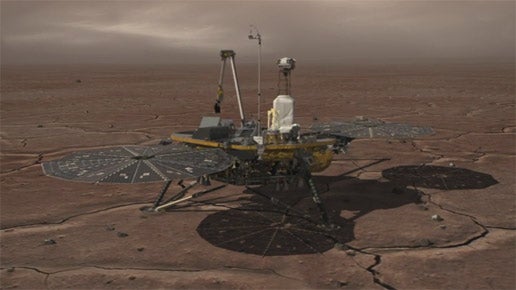Information received during the weekend indicates NASA’s Phoenix Mars Lander is running out of power each afternoon or evening but reawakening after its solar arrays catch morning sunlight. Since October 30, Phoenix communicated with controllers daily through relays to Mars orbiters.
The fraction of Sun above the horizon is declining every day at the martian arctic landing site. Plus, dust raised by a storm last week continues to block some of the sunshine.
“This is exactly the scenario we expected for the mission’s final phase, though the dust storm brought it a couple weeks sooner than we had hoped,” said Phoenix Project Manager Barry Goldstein of NASA’s Jet Propulsion Laboratory (JPL), Pasadena, California. “We will be trying to gain some additional science during however many days we have left. Any day could be our last.”
Mission engineers at JPL and at Lockheed Martin Space Systems, Denver, are attempting this week to upload commands to be stored in the lander’s flash memory for science activities to be conducted when the lander wakes up each day.
“Weather observations are our top priority now,” said Phoenix Principal Investigator Peter Smith. “If there’s enough energy, we will try to get readings from the conductivity probe that has been inserted into the soil, and possibly some images to assess frost buildup.”
Phoenix landed on Mars May 25. It accomplished its main science goals during the 3 months originally planned as its prime mission, then continued operating, now in its sixth month.










